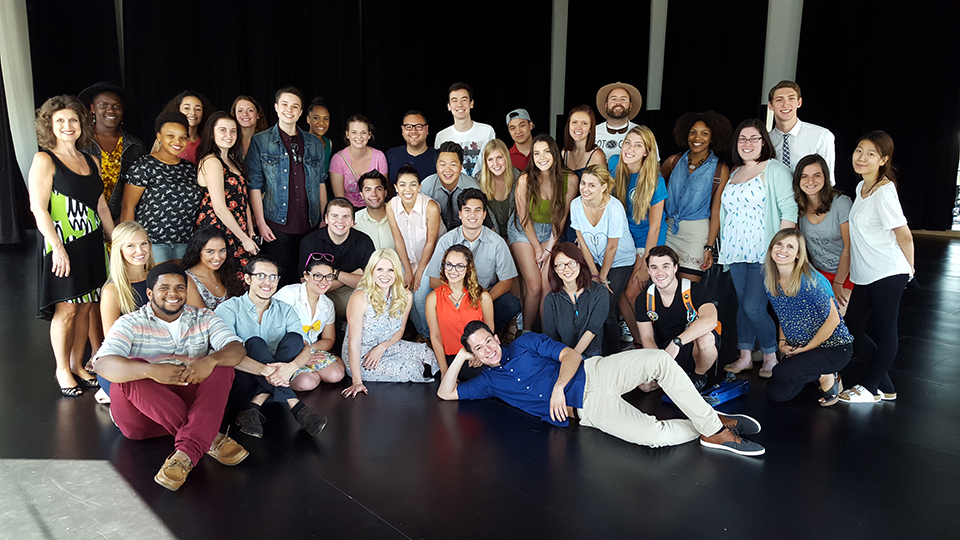Listen and Learn: Jazz Studies Students Benefit from “Jazz at Naz” Festival Artists in Master Classes
The Soraya’s “Jazz at Naz” festival isn’t just a feast for L.A.’s fans of the genre. It’s also a learning experience for CSUN’s jazz studies students in the Mike Curb College of the Arts, Media, and Communication.
The Soraya offers 5 to 7 music and dance master classes a year to CSUN students. Music students have taken part in classical, jazz, musical theater, and composition master classes. For dance students, master class offerings have included classical and contemporary ballet and modern dance.
This year, two of the artists performing in “Jazz at Naz” Feb. 4-11 are also teaching master classes. Tenor saxophone player Melissa Aldana, who performs Feb. 8 with the Melissa Aldana Quartet, will meet with around 40 students the next morning.
On Feb. 10, vibraphonist and composer Joel Ross will teach his master class in the afternoon and perform that evening.
CSUN’s Director of Jazz Studies is Tina Raymond, who also teaches percussion and drum set. She spoke to CSUN Today about the invaluable benefits of having professional artists talk with students, critique their work, answer their questions and inspire them to excel in their chosen careers.
How many students are part of CSUN’s Jazz Studies program?
Tina Raymond: We have approximately 60 jazz majors who are bachelor of music, jazz studies majors. And then, additionally, there are probably 20 or so [students] who are studying music education or music therapy or music industry studies, but have a jazz emphasis, and so take jazz lessons and participate in jazz ensembles.
How do the master classes work? Do students bring their instruments or is it a lecture from the performers?
TR: It varies on the artist and what they’re comfortable doing, and what they think and what we think is the most beneficial. With Melissa Aldana, we’re going to bring instruments over and have a couple of groups be prepared to perform for her and talk about composition. She’s a beautiful writer, in addition to being an incredible improviser. So, having students showcase their original compositions for her, and get some feedback on the compositional process with her in particular, will be very, very cool.
Some of the ones we’ve had in the past, like with Gerald Clayton, Gretchen Parlato, and Branford Marsalis have been Q and As. They’re invaluable experiences to get an inside scoop on the experience of being a touring and performing musician at that level. I think that’s a great kind of process to not have one way to do these master classes, because then we really get the benefit of what that artist wants to share.
What do the students come away with from these master classes?
TR: Concrete advice about how to move forward, because sometimes you get into these routines in school…. And even though you might be making progress, you don’t necessarily see it, because you’re [in] this ritualistic school environment and sometimes for artists, the structure of school makes you feel less artistic because it’s so repetitive. And having these artists come in who are outside of this school environment, who are giving different perspectives on how to approach these obstacles they might be having… It just gives these students so much energy and inspiration to keep at it and to keep going.
[The Soraya} gets such quality acts and interesting musicians, and that they build into the contract that they do these educational sessions with us, it’s such a gift.
Raymond, in addition to teaching has a busy performance schedule through the spring. In March, the Esthesis Quartet, that she co-leads, will appear in Los Angeles, as part of a tour for the release of the group’s second album, called “Time Zones.”


 experience
experience